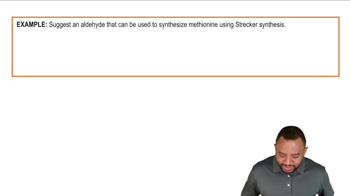Textbook Question
Show the products of the reactions of these carboxylic acids with PBr3/Br2 before and after hydrolysis.
(a) pentanoic acid
(b) phenylacetic acid
(c) succinic acid
(d) oxalic acid
 Verified step by step guidance
Verified step by step guidance Verified video answer for a similar problem:
Verified video answer for a similar problem:

